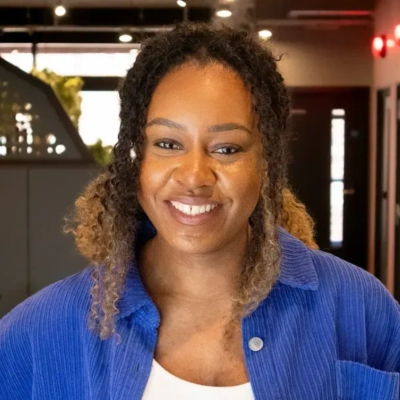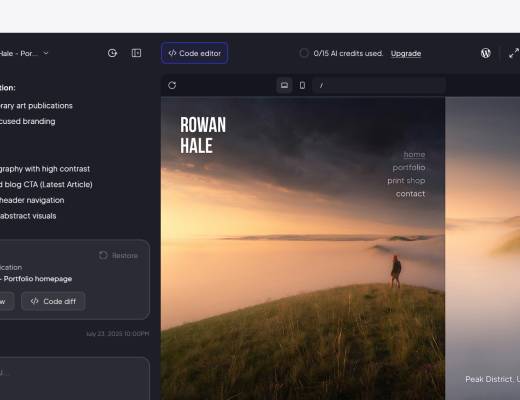Building a strong online presence is pivotal for success in today’s digital-forward business world. In this article, 19 experts share the strategies and tools they use to stand out, build trust, and drive meaningful engagement online.
- Build Local Authority Before Scaling Globally
- Share Insightful Content to Establish Expertise
- Create Systematic Omnichannel Content for Growth
- Engage Daily on LinkedIn for Visibility
- Tailor Content to Attract Ideal Clients
- Showcase Creative Process Through Visual Storytelling
- Focus on One Platform with Consistent Value
- Approach SEO as a Systems Problem
- Map Search Intent for Tailored Content
- Consistently Showcase Work on Instagram
- Test Content Strategies and Analyze Results
- Create Educational Resources with HubSpot Integration
- Leverage Podcast and TV Appearances
- Master One Platform Where Clients Spend Time
- Invest in Thought Leadership on LinkedIn
- Build Digital PR Assets for Backlinks
- Produce Consistent Quality Content for Audience
- Be Authentic and Engage Locally Online
- Invest in SEO for Long-Term Traffic Growth
How to build an online presence
Build Local Authority Before Scaling Globally
One strategy we’ve used to build a strong online presence is focusing on local authority first, before scaling visibility across broader platforms.
Our customers are service-based, brick-and-mortar businesses — so we took our own advice and started locally. Instead of chasing viral reach or paid ad campaigns, we focused on showing up where people are already searching with intent: Google Business Profiles, Apple Maps, voice assistants like Alexa and Siri, and localized organic search.
The key was ensuring our business information, service areas, and content were consistent, trustworthy, and optimized across every platform that matters for local discovery.
To achieve this, we used our own Listings Engine to keep our business data synchronized across 300+ platforms, and we optimized our Google Business Profile with weekly updates, Q&A content, and localized services using our Google Business Profile Boost. We also deployed our AI SEO Pixel to make our site content easier for AI and voice search tools to interpret — because search is no longer just text-based.
The result? We experienced increased traffic, more qualified leads, and stronger trust signals that helped us grow without having to rely heavily on paid ads.
The takeaway for other businesses? Start with your foundation: build local trust, show up consistently, and expand your presence by being the most helpful, findable answer in your space. The best “tool” you can invest in is one that helps people find and trust you — wherever they’re searching.
 Robert Downey
Robert Downey
Co-Founder, Simply Be Found
Share Insightful Content to Establish Expertise
One strategy we’ve relied on for branding is using social media to consistently share insightful, industry-specific content that highlights the value of human transcription. Rather than using social platforms purely for promotion, we use them to educate, posting about real challenges clients face in legal, academic, and business settings and how human transcription solves them.
This approach has helped us carve out a clear voice in a space increasingly dominated by AI noise. By sharing expert-backed insights on LinkedIn, Twitter, and Facebook, we’ve established ourselves as a trusted voice in the transcription space. The result? Increased visibility, engagement from peers and professionals, and a reputation for thought leadership that strengthens our brand identity over time.
 Beth Worthy
Beth Worthy
Cofounder and President, GMR Transcription Services, Inc.
Create Systematic Omnichannel Content for Growth
I’ve helped countless brands grow over the years by really focusing on systematic omnichannel content. This essentially involves using social media for trust building and websites for conversions.
Create video content that solves specific problems, post it to social platforms where your prospects spend time, and expand those videos into SEO-optimized blog posts on your website.
Social media follower counts don’t matter at all. It’s about demonstrating expertise consistently and having the algorithm connect you with the right people. Make sure you’re showing authenticity in how you think through problems.
Get your blog posts to delve even deeper, which can in turn help you rank in search engines and Large Language Models (LLMs).
And profit.
 Rodney Warner
Rodney Warner
CEO & Founder, Connective Web Design
Engage Daily on LinkedIn for Visibility
Consistency. That’s the strategy, mindset, and execution — all in one. Building a strong online presence demands staying top of mind, which only happens through daily engagement. Whether commenting on others’ posts, sharing your own content, or leveraging platforms to discuss trends and behaviors, the key is showing up relentlessly.
LinkedIn remains my most effective platform — it’s where professionals actively seek insights, community, and services. The intent-driven audience makes it a powerhouse for visibility.
 Joyce Tsang
Joyce Tsang
Content Marketer and Founder, Joyce Tsang Content Marketing
Tailor Content to Attract Ideal Clients
One key strategy we’ve used to build a strong online presence is ensuring that every piece of our social media content is designed to speak directly to the types of clients we want to attract. Instead of trying to appeal to everyone, we focus on showcasing the kind of work that reflects our strengths — brand activations, corporate events, festivals, and experiences tied to sports, fashion, and entertainment.
We’re intentional about the tone and look of our posts. Our content highlights polished, professional staff working at well-executed events. We feature clean photography, behind-the-scenes moments that show our attention to detail, and client testimonials that reinforce the quality of our service. This approach helps position us as a reliable, high-performing staffing partner and draws in clients who value professionalism, consistency, and strong on-site support.
In terms of platforms, we’ve found that Instagram and LinkedIn are the most effective for us. Instagram allows us to visually tell the story of our events and team in a way that’s engaging and easy to share. LinkedIn helps us connect with decision-makers, build relationships, and showcase our credibility in a professional setting. The two work together to strengthen our brand image and attract the right opportunities.
My advice: be intentional about what you post. Make sure your online presence reflects the type of work and partnerships you want — that focus is what helps the right clients find you.
 Isabella Galeazzi
Isabella Galeazzi
COO, Elevate Events
Showcase Creative Process Through Visual Storytelling
One of the most effective strategies I used to build a strong online presence was storytelling through visuals. Rather than just showcasing finished spaces, we shared the creative process — material selections, prototyping, artisan collaborations, and behind-the-scenes moments. This built trust and an emotional connection with our audience.
Instagram and Pinterest proved most effective for reaching design-savvy clients, while LinkedIn helped us connect with architects, developers, and other collaborators. We also used SEO-optimized blogs to drive organic traffic and establish thought leadership in the design and product development space.
 Adil Abbas
Adil Abbas
Founder, AD+L Studio Inc.
Focus on One Platform with Consistent Value
Start with research. If you don’t know where your audience actually is, you’re wasting time trying to show up everywhere. Don’t fall into the trap of thinking you need to be on every social platform just to stay relevant. You don’t.
Figure out where your audience hangs out, then commit to showing up consistently on that one platform. Engage organically. Comment, respond, share value — don’t just post and ghost.
And here’s the tool that makes it work: storytelling. People connect with people, not pitches. If you can speak to real-life problems and show how you solve them, you’ll build trust faster than any ad ever could. Relate to your audience. Solve their actual issues. That’s how you build presence that sticks.
 Nicole Gallicchio-Elz
Nicole Gallicchio-Elz
Chief Operations Officer, Elz Fractional Partners
Approach SEO as a Systems Problem
One of the most effective strategies I’ve used to build a strong online presence was approaching SEO as a systems problem, not just a content problem. We didn’t chase traffic — we built infrastructure. That meant creating modular, intent-based content frameworks, tightly integrated with product and UX. We mapped out user journeys, identified decision points, and built pages that answered real questions at each stage — not just to rank, but to convert and retain.
As for tools, the usual suspects like Ahrefs and GSC were table stakes. What really moved the needle was building internal workflows that treated SEO like an owned growth channel — with visibility across engineering, design, and content. The platform didn’t matter as much as the mindset: sustainable growth comes from architecture, not hacks.
 Alena Astravukh
Alena Astravukh
CMO, Elemup
Map Search Intent for Tailored Content
The most effective strategy I’ve implemented to build a strong online presence is search-intent mapping. By understanding what our target audience searches for at each stage of their buying journey, we create tailored content that directly addresses their needs. Using tools like SEMrush and Google Search Console, we refine our approach to ensure maximum impact.
For instance, we recently worked with an eCommerce client where we identified key customer questions and pain points. We developed a comprehensive content hub around these topics, resulting in a 134% increase in organic traffic and a doubling of revenue from search within six months. This approach not only improved rankings but also established the client as a trusted resource in their niche.
A unique aspect of our strategy is the integration of ongoing A/B testing for both content and Google Ads. This real-time analysis allows us to identify which messages resonate most with our audience, ensuring we focus on what drives conversions. Our clients have seen up to a 2,050% increase in top 3 rankings as a result.
 Shonavee Simpson Anderson
Shonavee Simpson Anderson
Senior SEO Strategist, Firewire Digital
Consistently Showcase Work on Instagram
Content. Content. Content. For us, Instagram has been the most powerful tool in building a strong online presence. From press wins and artist milestones to behind-the-scenes moments and event recaps — we’ve made it a priority to consistently showcase our work. That visibility builds credibility.
We don’t wait for someone else to tell our story — we tell it ourselves, every day. It keeps our clients front and center, and it shows people exactly what we do and why it matters.
 Trevor Perkins
Trevor Perkins
Founder, PERK PR & Creative Agency
Test Content Strategies and Analyze Results
One strategy I’ve found effective in building a strong online presence is this: test, then listen.
Every business is different, so I don’t believe in one-size-fits-all strategies. What works for a wedding DJ in Florida won’t necessarily work for a skincare brand or a nonprofit. That’s why my go-to approach is always experimentation first.
Spend 30-60 days testing different types of content: B-roll, talking videos, educational posts, trend-based Reels, you name it. Try a variety of themes, tones, and filming styles. Then, take a deep dive into the results. Which videos held attention the longest? Which topics drove DMs or comments? Did the caption style or hashtag set make a difference?
From there, you can build a strategy based on your audience and your goals, not just what’s trending.
As for tools? I live on Canva AI and ChatGPT. They’ve helped me streamline everything from content creation to ideation, and they’ve been a key part of what’s made some of my client pages take off.
Strategy isn’t a one-size template; it’s a process. And the best ones are built from REAL data and adaptability.
 Olivia Shears
Olivia Shears
Social Media Manager, Social Bean Agency
Create Educational Resources with HubSpot Integration
One strategy we’ve used is treating our own marketing as a live showcase of the value we deliver for clients. Rather than generic content, we invest in creating in-depth educational resources, such as podcasts, downloadable guides, and webinar series, then amplify them through a tightly integrated HubSpot ecosystem.
HubSpot has been invaluable not only for marketing automation and CRM alignment but also for personalizing nurture journeys and measuring what content drives qualified demand.
This combination of thought leadership content and an attribution framework through HubSpot has allowed us to engage professional services audiences across LinkedIn, email, and organic search in a way that feels relevant, consultative, and measurable.
 Monalisa Chanakira
Monalisa Chanakira
Digital Marketing Executive, Karman Digital
Leverage Podcast and TV Appearances
One of the most effective ways I built early visibility for Franzy was by appearing on podcasts and live TV. I’ve been a guest on Anthony “Pomp” Pompliano’s The Pomp Podcast, appeared live on NYSE TV, and participated in a segment with Cheddar. These appearances helped people connect a face and voice to what we’re building.
I shared genuine insights about franchise ownership: why the process is broken, what buyers are missing, and how we are solving these issues. Each appearance was focused, transparent, and drawn from firsthand experience.
We observed a clear spike in traffic and inbound interest after each appearance. Founders, operators, and investors reached out directly to discuss further. Some of those conversations evolved into partnerships.
It’s crucial to show up where your audience spends time. Speaking from real experience earns trust and delivers results quickly.
 Alex Smereczniak
Alex Smereczniak
Co-Founder & CEO, Franzy
Master One Platform Where Clients Spend Time
I stopped trying to be everywhere and focused on mastering one platform where my ideal clients actually spent time. For me, that was LinkedIn — I shared behind-the-scenes insights about running a business and genuinely engaged with others’ content instead of just broadcasting my own. I also started a simple email newsletter using ConvertKit, sharing one actionable tip each week. The real game-changer was consistency over perfection. I’d rather post something helpful twice a week than create the “perfect” post once a month. Within a year, I had tripled my network and was getting referrals from people I’d never met in person.
 Sarath C P
Sarath C P
Digital Marketing, Eqvista
Invest in Thought Leadership on LinkedIn
Our most effective strategy for building a strong online presence has been focusing on credibility and high-value, niche content. Rather than chasing followers, we invest in thought leadership — sharing expert insights on AI, venture building, and deep tech commercialization.
LinkedIn has been the most effective platform for us. It allows us to reach entrepreneurs, investors, and researchers directly. We use it to publish articles, share case studies, and spark conversations that attract exactly the kind of people we want to work with.
My advice: focus on platforms where your actual decision-makers spend time, and deliver consistent, meaningful content.
 Igor Trunov
Igor Trunov
CEO, Atlantix
Build Digital PR Assets for Backlinks
As someone who builds and monetizes websites, I’ve learned that the most durable online presence is built on earned authority, not just content volume.
Our most effective strategy was to build a Digital PR Asset. This is a single, data-rich piece of content, like a proprietary study or an industry report, created for the express purpose of earning high-quality backlinks from news outlets and industry blogs.
For one of our energy sites, we analyzed public data to create a definitive guide on the cost of electricity in every state. We used Ahrefs to confirm that journalists were actively looking for this data, and then we built a resource that was more comprehensive than anything available. That one asset became a magnet for backlinks from major publications.
This approach built foundational authority that lifted search rankings for our entire website, not just a single page. It’s a strategy that builds a true moat around your business that is difficult for competitors to replicate.
 Leury Pichardo
Leury Pichardo
Director of Digital Marketing, Digital Ceuticals
Produce Consistent Quality Content for Audience
I strongly believe in the power of good and frequent content, which adequately covers the audience’s needs. The second tactic that has enabled me to establish a favorable online presence was sharing helpful articles and tips on a blog and actively participating in social media platforms, such as LinkedIn and Instagram. Thanks to the ability to identify pain points in organizational development and translate them into content, I could appeal to my target audience.
When discussing examples of tools, I focused on using simple design platforms to ensure that posts look good and analytics tools to monitor engagement and make necessary changes to my strategy. Instagram allowed me to widen my scope, and LinkedIn was ideal for networking professionally.
The secret is consistency and quality. Content linked to the interests and issues of the people you are writing for will always be more appealing and will evoke more action. The platforms help you disseminate your message and increase your visibility.
 Uku Soot
Uku Soot
Organizational Growth Strategist, IPB Partners
Be Authentic and Engage Locally Online
One of the biggest things that’s worked for us is just being consistent and honest with what we post online. We’re not trying to sound bigger than we are. We’re a local business, and that’s actually a strength. So instead of chasing trends, we focus on showing what we’re doing, the work we’re proud of, and the people behind it. Customers respond to that more than formulaic, polished, corporate-style content.
LinkedIn has been a goldmine. I spend time every week engaging with posts from local Chamber of Commerce members, local business owners, and even just commenting helpfully on posts where people are asking about tech issues. It’s not about selling — it’s about being helpful first.
Instagram and Google Business Profile have also been effective platforms for us. Instagram is great for visual updates: quick shots of the team, before-and-afters, local projects, it helps people see we’re active and reliable.
Google, on the other hand, is about trust. Keeping our profile updated with reviews and photos helps us show up when people are actually looking for a service. That’s where the real leads come from.
We’ve also used SEO, of course, to make sure we’re not missing easy wins. Having a site that’s clean, fast, and answers the right questions has definitely helped.
There’s no one big trick. It’s more about doing the basics well and not dropping the ball. People want to see that you’re around, that you do good work, and that others trust you. If you can show that clearly, online or off, that’s what builds a presence.
 Adam Bowles
Adam Bowles
Founder, Web Strategist, Act360 Web & I.T
Invest in SEO for Long-Term Traffic Growth
One of the best ways to build a strong online presence is by investing in search engine optimization (SEO). Unlike social media, people searching for a service on search engines already have buying intent and are more likely to convert. Investing in SEO to get your website and Google Business Profile to the top of search results is going to be the most effective way to ensure stable traffic for long periods of time.
There are a few tools I would recommend to anyone doing search engine optimization on their website:
1. YouTube – This one may be obvious, but it’s a great tool for someone just now learning about search engine optimization. Look up Nathan Gotch or other SEO experts and start learning what you need to do.
2. SEMrush or Ahrefs – Either of these is fine, but get something that you can use to analyze your site, get recommendations on what to fix, find backlink opportunities, and, above all else, do keyword research.
3. Rankability – This is my preferred tool for content optimization. There are a lot out there, but just make sure you have something that can help you craft and optimize content that will rank well.
 Jerry Newman
Jerry Newman
Owner/Operator, Tech Titan
 Robert Downey
Co-Founder, Simply Be Found
Robert Downey
Co-Founder, Simply Be Found
 Beth Worthy
Cofounder and President, GMR Transcription Services, Inc.
Beth Worthy
Cofounder and President, GMR Transcription Services, Inc.
 Rodney Warner
CEO & Founder, Connective Web Design
Rodney Warner
CEO & Founder, Connective Web Design
 Joyce Tsang
Content Marketer and Founder, Joyce Tsang Content Marketing
Joyce Tsang
Content Marketer and Founder, Joyce Tsang Content Marketing
 Isabella Galeazzi
COO, Elevate Events
Isabella Galeazzi
COO, Elevate Events
 Adil Abbas
Founder, AD+L Studio Inc.
Adil Abbas
Founder, AD+L Studio Inc.
 Nicole Gallicchio-Elz
Chief Operations Officer, Elz Fractional Partners
Nicole Gallicchio-Elz
Chief Operations Officer, Elz Fractional Partners
 Alena Astravukh
CMO, Elemup
Alena Astravukh
CMO, Elemup
 Shonavee Simpson Anderson
Senior SEO Strategist, Firewire Digital
Shonavee Simpson Anderson
Senior SEO Strategist, Firewire Digital
 Trevor Perkins
Founder, PERK PR & Creative Agency
Trevor Perkins
Founder, PERK PR & Creative Agency
 Olivia Shears
Social Media Manager, Social Bean Agency
Olivia Shears
Social Media Manager, Social Bean Agency
 Monalisa Chanakira
Digital Marketing Executive, Karman Digital
Monalisa Chanakira
Digital Marketing Executive, Karman Digital
 Alex Smereczniak
Co-Founder & CEO, Franzy
Alex Smereczniak
Co-Founder & CEO, Franzy
 Sarath C P
Digital Marketing, Eqvista
Sarath C P
Digital Marketing, Eqvista
 Igor Trunov
CEO, Atlantix
Igor Trunov
CEO, Atlantix
 Leury Pichardo
Director of Digital Marketing, Digital Ceuticals
Leury Pichardo
Director of Digital Marketing, Digital Ceuticals
 Uku Soot
Organizational Growth Strategist, IPB Partners
Uku Soot
Organizational Growth Strategist, IPB Partners
 Adam Bowles
Founder, Web Strategist, Act360 Web & I.T
Adam Bowles
Founder, Web Strategist, Act360 Web & I.T
 Jerry Newman
Owner/Operator, Tech Titan
Jerry Newman
Owner/Operator, Tech Titan







